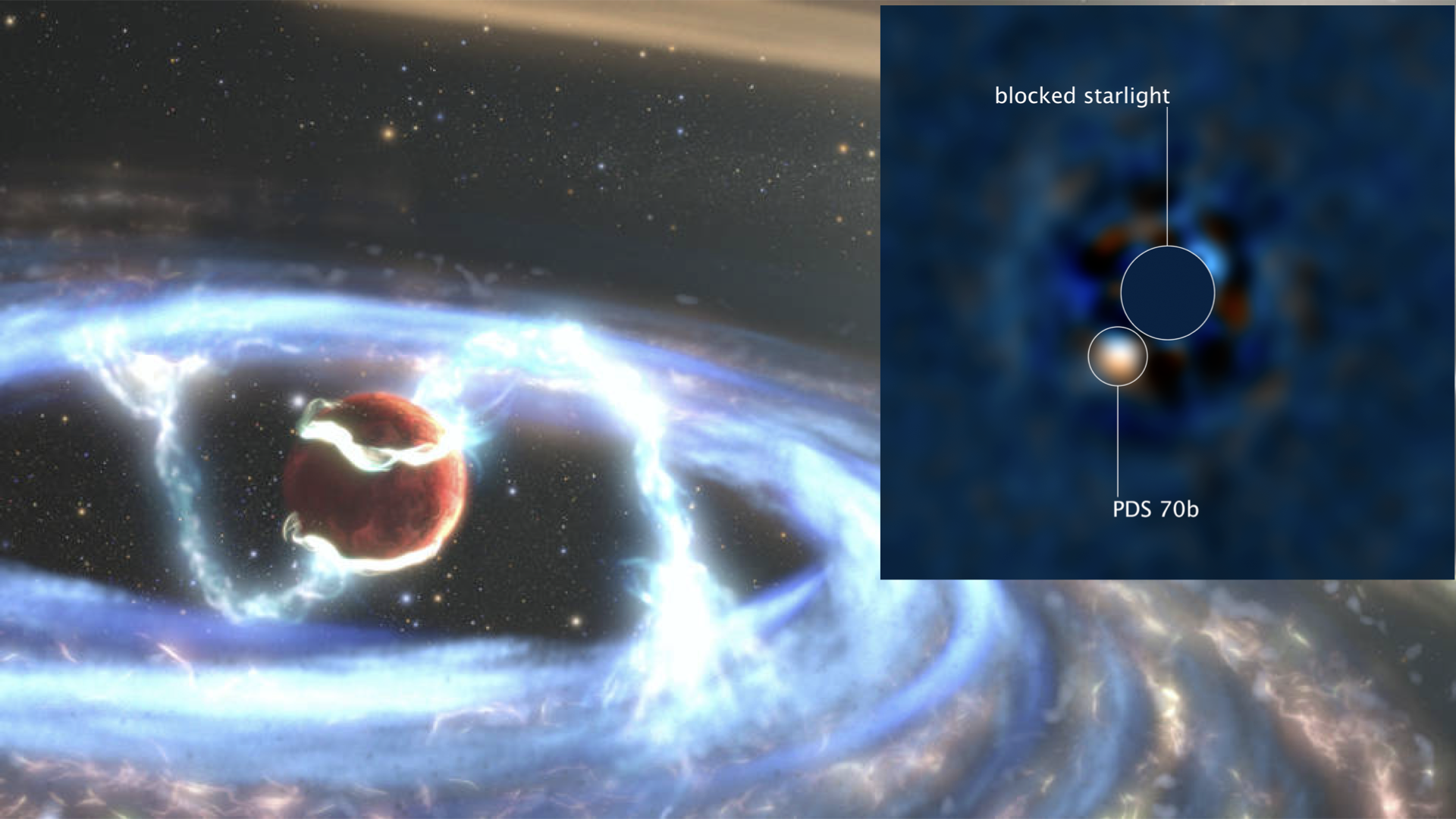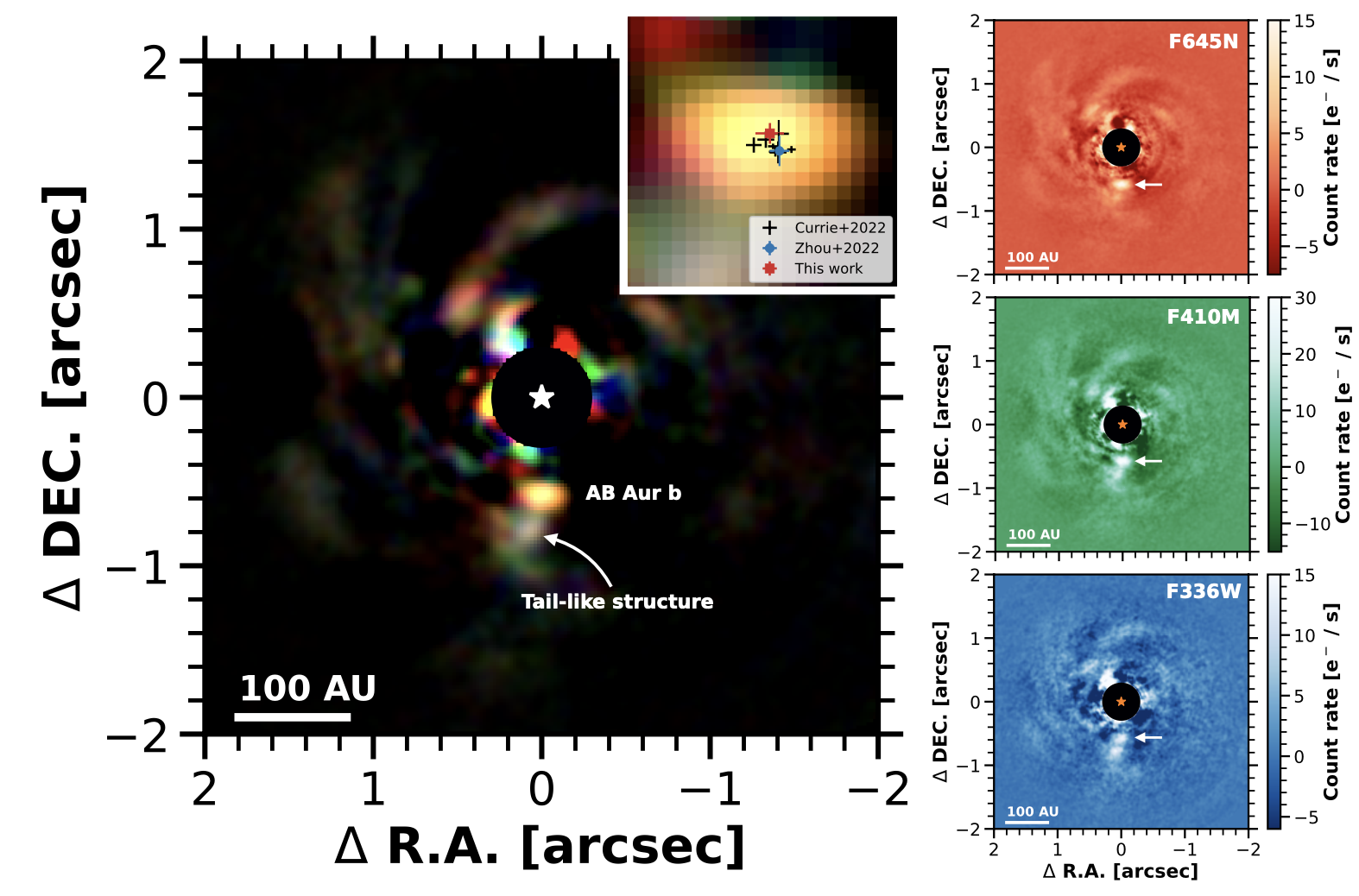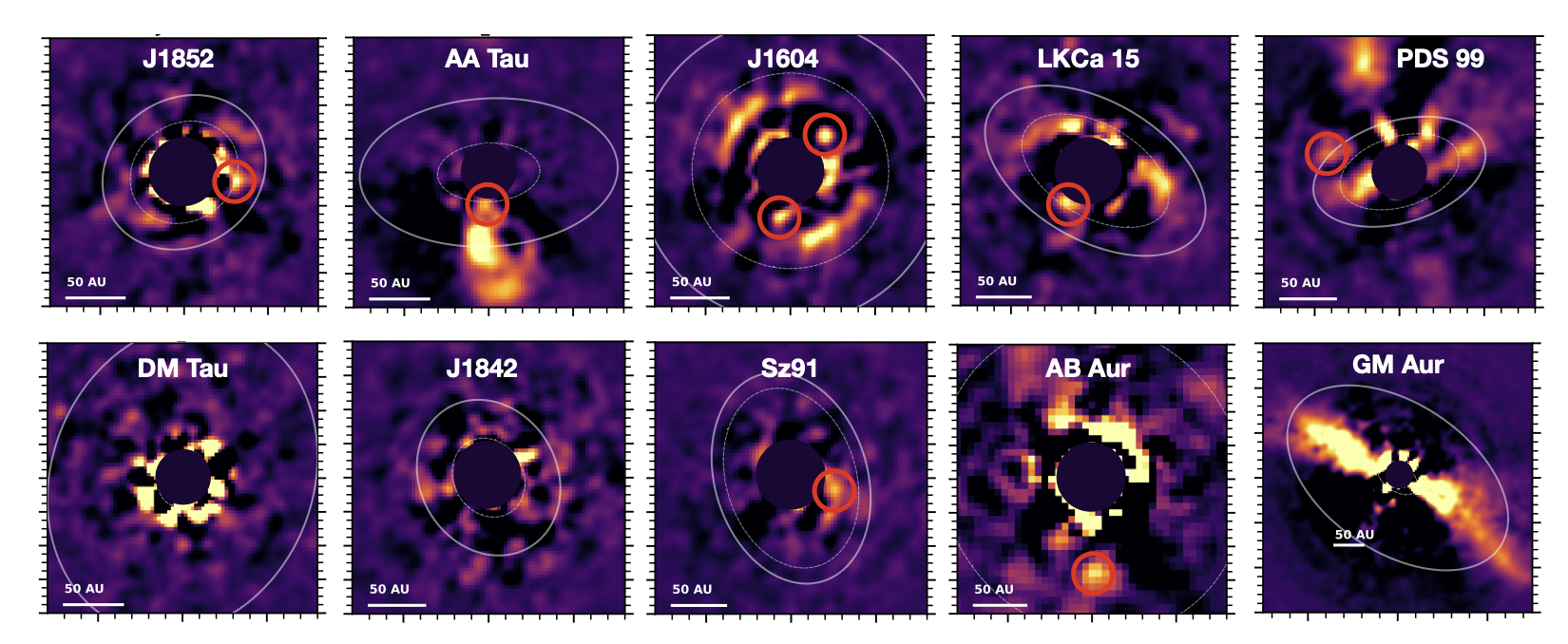Search and characterize young planets with high-contrast imaging observations.
Projects
1. HALPHA: Hubble Accreting Luminous Protoplanets in H-Alpha
HALPHA is an HST Cycle 30 program, where we have collected high-contrast imaging data of ten transition disk systems in the narrowband H-alpha filter. We will identify and characterize the protoplanetary signals, analyze the disk structures in scattered light, and investigate the formation evironment of protoplanets.
2. Understand accretion onto planets with a multi-wavelength approach.
Mass accretion onto young forming planets have been probed using mutliple accretion indicators. We will gather observations in the ultraviolet continuum and hydrogen emission lines to estimate the mass accretion rate of these planets. Combining these observations with latest planetary accretion model will lead to a more complete understanding of planet formation.
3. Characterize benchmark gas giant planets.
Precise GAIA astrometry and long-term radial velocity observations have yielded dynamical mass constraints of planets and brown dwarfs. We will measure the spectral energy distributions of these “benchmark” substellar objects to test against the evolutionary and atmospheirc models, which are essential tools to interpret observations of exoplanets.

Breakthroughs in high-spatial-resolution imaging observations with ALMA and extreme-adaptive-optics systems allow us to closely examine the planet formation processes. A wealth of disk substructures revealed in ALMA images point to the interaction between forming planets and their natal disks. Direct detections ongoing accretion onto young planets are made through imaging the famous PDS 70 system in H-alpha and ultraviolet bandpasses. Guided by GAIA astrometry, high-contrast imaging surveys yield a substantial sample of planets and brown dwarfs, enabling benchmarking of substellar atmospheric and evolutionary models. This exhilarating progress ushers in an era of profound insights into planet formation and evolution.<br/>

I am a leader in high-contrast imaging observations of exoplanets, in particular, with space-based observatories. My team and I achieved a significant milestone by observing the PDS 70 using the Hubble Space Telescope (HST) (Zhou et al. 2021). The direct measurement of planet PDS 70 b’s mass accretion rate through ultraviolet and H-alpha imaging showcased the HST’s remarkable high-contrast imaging capabilities. Currently, I lead the HST Cycle 30 program HALPHA: Hubble Accreting Luminous Protoplanets in H-Alpha, further harnessing the imaging power of HST for protoplanet discovery and characterization (e.g., Zhou et al. 2022). Moreover, in collaboration with Dr. Brendan Bowler’s group (Bowler et al. 2021), we have been gathering crucial infrared photometry data on the benchmark brown dwarf HD 47127 B using the Keck telescope.<br/>

My team and I are conducting a multitude of study to tackle the questions of when and how planets form. Delving deep into the captivating images amassed from the HALPHA survey, we explore the protoplanet population with the highly sensitive HST images. Leveraging the cutting-edge high-contrast imaging technique on HST, we seek to unravel the intricate accretion processes of planetary objects, employing a multi-wavelength approach. Additionally, we push the boundaries, devising novel observational techniques on HST, JWST, and MagAO-X to discern the variability of accreting planets. Moreover, we accumulate SEDs of benchmark planets and brown dwarfs, consolidating essential models for comprehending the evolution of exoplanets.
